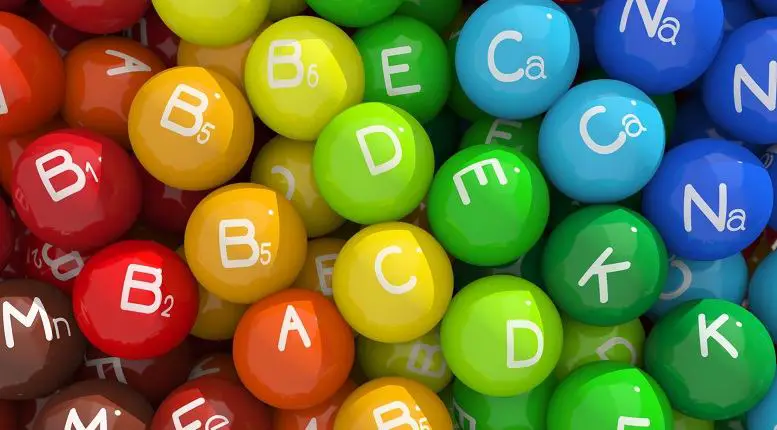Soya is often treated as a single food, but in reality, it comes in many different forms—each with a unique nutritional profile. For instance, dry roasted soybeans, commonly eaten as a snack, are rich in fiber, whereas liquid soya products like soya milk—frequently used as a dairy alternative—contain no fiber at all.

Soya oil may be hydrogenated during processing, increasing its saturated fat content compared to its unprocessed counterpart. Boiled soybeans and tofu offer good amounts of calcium, but the calcium levels in soya milk can vary widely depending on the brand. As you’ll discover, soya is a highly versatile food, and understanding how to choose and use its various forms is key to maximizing its health benefits.
When we look at the overall chemistry of this plant, we can see that its potential to prevent disease is significant. We have also reached a critical juncture in the research, a point where past supposition and speculation have been transformed into concrete evidence we can use to improve our health and help prevent various conditions and diseases.
The following information is a brief summary of some of the beneficial nutritional components of soyabeans. Additional information is found in relevant sections
Fiber
When your grandmother told you to eat more “roughage,” she was talking about fiber, and for most people, increasing fiber in the diet is advantageous for numerous reasons. Fiber comes in many varieties, so fiber is an all-inclusive term used for the substances in plant foods that remain virtually unchanged as they travel through the digestive tract. Some fiber, that is found in many vegetables and wheat is firm and often described as crunchy; the fiber found in oats is described as sticky. For this reason, different types of fiber have differing biological effects.
There is no hard and fast rule about how much fiber we should include in our diets, but many health-care professionals agree that most of us should consume between 20-35 grams of fiber a day. If we consider that an average serving of tempeh, a product derived from soya and generally used as a meat substitute, contains up to 10 grams of fiber, we can see that this soya product is a significant source of dietary fiber.
Vitamins and Minerals

Soyabeans are packed with important nutrients, including calcium, magnesium, and many B-complex vitamins. Eat a half cup of boiled soyabeans and you have consumed almost half (about 44 percent) the Recommended Daily Allowance (RDA) of iron. You will also receive a significant amount of calcium, magnesium, and zinc. Thiamine, niacin, riboflavin, and vitamin B6 are also present in amounts significant enough to consider soyabeans a good source these B-complex vitamins. (Soya does not contain vitamin B-12, however, so vegetarians must obtain that nutrient from another source.)
It is also important to look at other chemical substances found in soyabeans, many of which are believed to have a significant role in preventing cancer or retarding its growth. Many of these substances are considered antioxidants, which as you may know, neutralize the effects of free radicals. Free radicals are potentially harmful molecules produced in the cells; while there are various types of free radicals, all have the ability to damage cells and impair immunity. Nutrients such as vitamins C, E, and beta-carotene are important antioxidants, but other substances found in a variety of foods also have antioxidant properties. Soya contains so many of these valuable anti-cancer substances that this plant has become the subject of many cancer prevention studies.
The group of chemicals listed below belongs to a family of substances collectively referred to as phytochemicals. The prefix phyto is used to indicate that the chemical is found in plants. These chemicals are not nutrients in the strict sense of the word, yet in many cases, they prove beneficial for humans in preventing or healing common conditions or diseases.
Consider, for example, that the bark and leaves of the white willow tree contain a chemical called salicylic acid. We know this substance as aspirin, the common remedy for pain. (Aspirin may also play a role in preventing heart attacks, so its place in medical practice is changing.)
Protease inhibitors
These chemicals block the work of an enzyme involved in protein digestion. On the face of it, it would appear that this is a negative property of soyabeans (and many other foods, particularly rice, potatoes, and some beans). In fact, the U.S. Department of Agriculture once used a process to remove this chemical from soyabeans, believing it was better for growing children to consume soya products free of protease inhibitors.
However, other research has found that protease inhibitors actually interfere with the damaging activity of many cancer causing agents. So, rather than representing a risk, protease inhibitors are potentially important in unraveling the mystery surrounding the way cancer develops in the body. I will discuss this issue more fully in a later chapter that deals specifically with soya and cancer prevention and treatment.
Flavonoids
This group of chemicals is largely responsible for the yellow, red, or deep blue color in fruits and flowers. Bioflavonoids are found in citrus fruits and interest in them increased when Nobel Prize winner, Albert Szent-Gyorgyi, demonstrated that the bioflavonoids in citrus fruits act like a vitamin in the body.
Szent-Gyorgyi’s research led to further investigation and flavonoids have been discovered in numerous foods, including soyabeans. They are also found in various vegetable families, cereal grains, green tea, and some herbs. Flavonoids are thought to have significant anti-cancer properties and act to inhibit enzymes that stimulate cancer growth in its early stages.
Isoflavones
These chemicals are related to one of the 15 classes of flavonoids, and are phytoalexins, chemicals a plant produces to protect itself under stressful conditions. Isoflavones are particularly important in our discussion of cancer because they are phytoestrogens, meaning that they contain the hormone estrogen and are involved in estrogen metabolism. (Again, the prefix phyto indicates that these estrogens occur in plants.)
The story is more complex, however, because it appears that isoflavones actually negate harmful effects of estrogen and may therefore play a role in preventing breast cancer–and other cancers as well. According to some experts, soya is the single most important source of phytoestrogens, making it potentially one of the premier foods involved in preventing some forms of cancer. Genistein and diadzein are two important phytoestrogens found in soyabeans.
Polyphenols
These compounds are also anti-cancer chemicals found in numerous plants, including soyabeans. They act as a form of chemical garbage collectors as they go about neutralizing cancer causing agents in the body. It is believed that these substances interfere with other chemicals that promote tumor growth. Therefore, they play a valuable role in suppressing the growth of cancerous cells in the body.
Terpenes
Found in plant oils and resins, this class of antioxidant interrupts cancer cell formation, thereby helping to negate the harmful effects of cancer-causing substances.
Saponins
Saponins have antioxidant properties, and further investigation is needed to determine their specific role in preventing cancer, specifically colon cancer. These chemicals may also play a part in controlling cholesterol levels by interfering with its absorption.
Phytosterols
Found only in plants, phytosterols resemble cholesterol, but these chemicals may help prevent heart disease rather than contributing to it. Phytosterols are not absorbed in the intestines and instead move to the colon, which may accfount for their potential role in protecting against colon cancer.
Phytate
The important mineral phosphorus is stored in the body as phytate. Like protease inhibitors, phytate was thought to be harmful in that it binds with other minerals, such as iron, and prevents their absorption in the intestines.
However, the characteristic that was once thought to be harmful may instead be what gives it its ability to protect against colon cancer. When phytate binds with iron, free radical formation is inhibited. In this situation, phytate is acting as an antioxidant substance. So, rather than being detrimental because it inhibits iron absorption, phytate may act to keep iron at a safe level in the body.
Phytate may also enhance the immune system and have a role controlling cell growth.
With the exception of isoflavones, many varieties of plant foods contain these phytochemicals in varying amounts.
Populations, including Seventh Day Adventists in North America, who eat a plant-based diet, have far lower incidence of heart disease and many cancers. It is the isoflavone content of soya makes it unique among the staple plant foods consumed by a majority of the world’s populations. Soyabeans offer high-quality protein and an array of protective phytochemicals, and in addition, they are versatile, as shown by the wide variety of foods produced from them.









































![What to Eat for Healthy Eyesight [Infographic] glasses](https://healthiack.com/wp-content/uploads/2014/10/glasses-100x70.jpg)